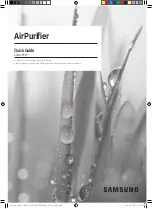
5
Assembly and
installation
5.1 Important notes
prior to installation
When installing the unit, observe the following
points:
n
The installation must be carried out on a flat
wall
n
Ensure that the wall meets the static require-
ments (consider the weight of the device as
well as the required holes to be drilled)
n
Ensure that the minimum clearances are
observed to allow trouble-free maintenance
and/or servicing
n
Ensure that no water pipes, power cables or
similar are inside the wall of the installation
area as they could be damaged by drilling
holes
n
Ensure that there are no adjacent objects
which may obstruct the air circulation
n
Do not install the unit in close proximity to or
above heat sources or electrical devices
n
By correctly placing the unit, ensure that the air
stream is not directly aimed at people
n
A mains socket suitable for a plug with protec-
tive contact, must be provided in the vicinity of
the system
5.2 Minimum clearances
Observe the minimum clearances to allow access
for maintenance and repair work and facilitate
optimum air distribution.
A
B
D
C
Fig. 6: Minimum clearances
KWT 240 DC (all measurements in mm)
A
60
B
120
C
60
D
50
Observe minimum clearances even outside and
ensure that vegetation and plants also keep to the
minimum distances. Heavy contamination of the
condenser and increased maintenance costs must
be expected if there are leaves or needles in the
vicinity of the ventilation ducts.
Furthermore, depending on the region, ensure that
the ventilation ducts are not blocked with snow to
prevent the entry of snow into the unit or limitation
of the air flow.
> 800 mm
Fig. 7: Minimum clearances
5.3 Installation materials
The unit must be fastened to a suitable wall using
the wall bracket with sufficient screws. Only use
suitable fastening materials for your application
case.
13













































